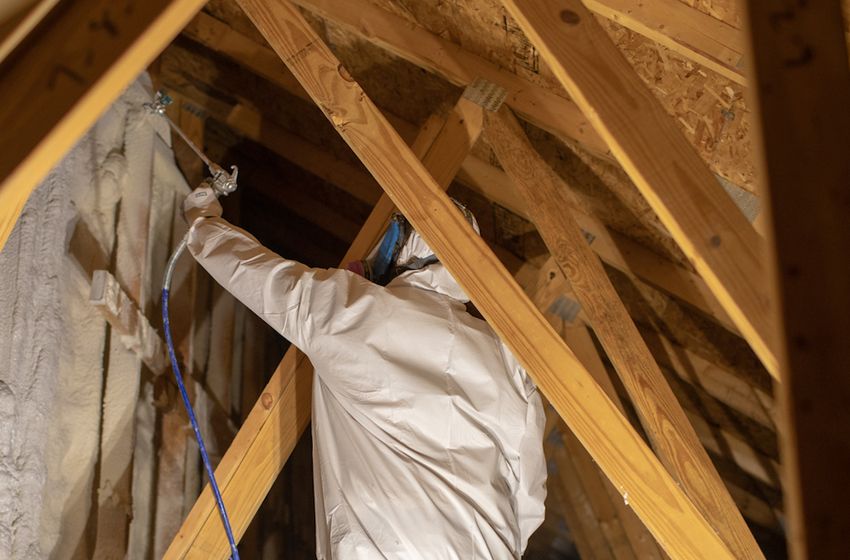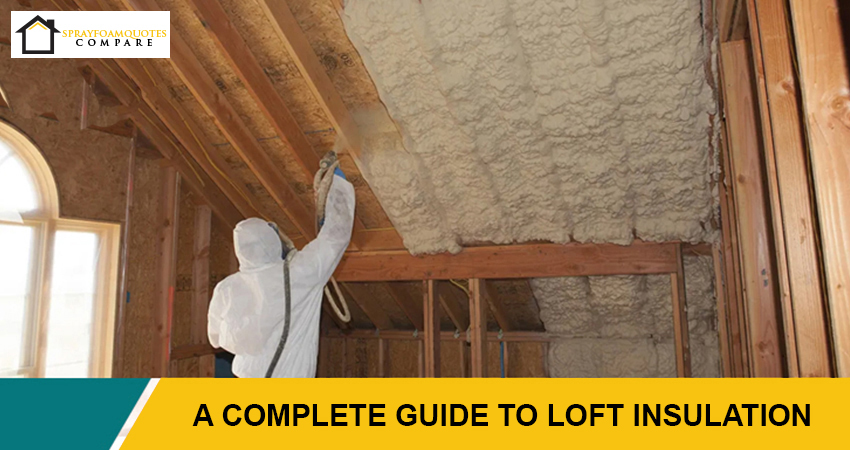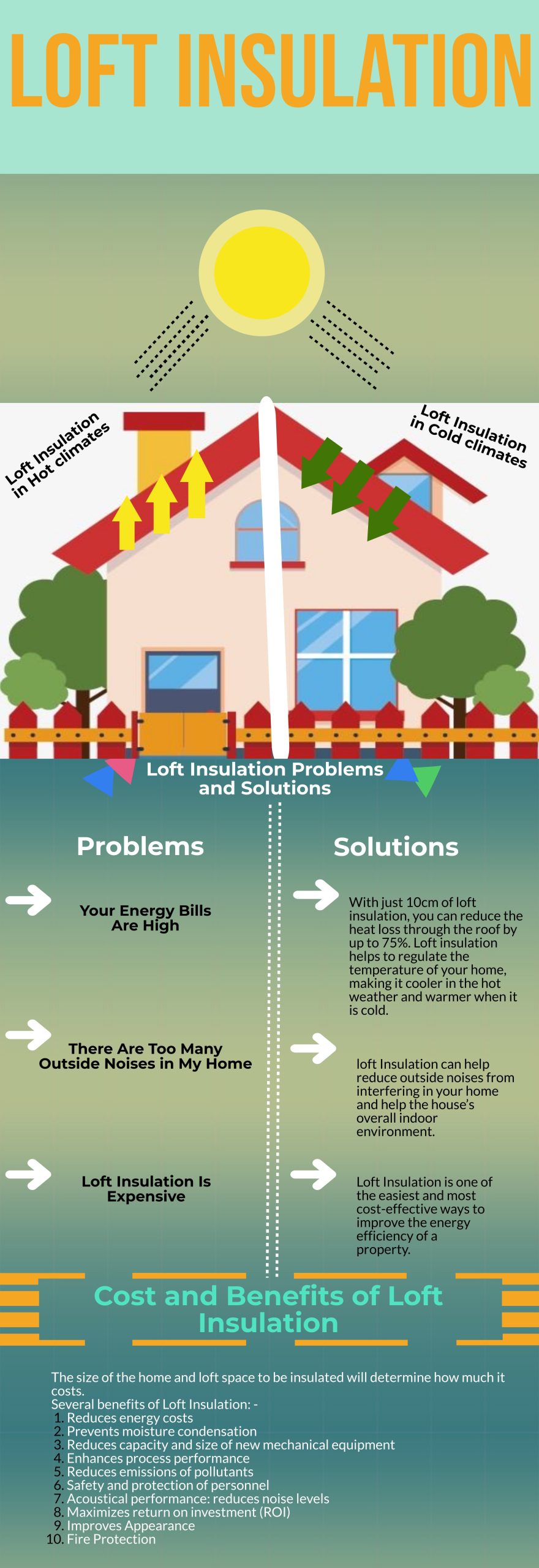What is Loft Insulation?
“Loft insulation is a thick barrier material that is used to fill-up your roof space and traps the heat from the outcome” such as foam or fiberglass, which can help reduce the exit of heated and cooled air from the inside of a home to the outside space. The insulation that you choose for sealing the loft space can help you to save a good amount of money annually on heating and cooling expenses.
Why do you Need Loft Insulation?
The benefits of loft insulation are many. In any home without insulation, at least 25% of the indoor heat gets lost through the roof – which means that much more heating is needed with a furnace or HVAC system during the chilly winter season. When the loft, flat roof, or attic is insulated, it can reduce the loss of heat effectively and manage to lower heating bills easily.
What are The Benefits of Loft Insulation?
There are multiple types of insulation that can be installed. Effective loft insulation can aid in reducing your carbon footprint, increase the energy-efficiency of your home by as much as 14% and reduce your heating bills by as much as £250 every year. It can serve as a loft insulation material blanket and help seal the area against any change in the outside air. Other than lowering heating bills easily, it can be useful in preventing the entry of pests in your house. Here are completely describe the benefits of loft insulation :
- Cooling and Heating: One of the best things that spray foam insulation can do for your home is that it insulated all the tiny gaps in the walls and flooring. It dries very quickly while expanding into these areas which means it blocks out the air and water from moving from place to place. It can – depending on your location – reduce your heating and cooling bills and while it’s more expensive than other insulation options, spray foam insulation will help to save you money in the long run so it’s worth the investment.
- It Reduces Noise: You want to make your home soundproof for the neighbors, right? Well, you could use spray foam insulation to help. Even if you are quiet and the neighbors aren’t, having spray foam in the walls will help you to reduce noise, specifically when you use open-cell spray foam insulation. The cells open and expand into the cracks, minimizing the noise more than any other insulation type.
- Reduction of Allergens: One of the other benefits of spray foam insulation is that you can reduce the amount of dust and pollen floating around your house. The foam gets in to all the tiny cracks and crevices, meaning that outside air cannot get through the walls. When you reduce the allergens coming into the building from the outside, you will help those who suffer to feel more comfortable. This is a remarkable way to keep the air in your home healthier than with other insulation methods, and by extension, you’ll save money on your medical bills.
- Bye, Bye, Bugs: Are you constantly dealing with infestations from bugs and rodents in your house? You wouldn’t be alone; it happens, especially if your home is near forests, fields, or railway stations. With closed-cell spray foam insulation, you can create a barrier against bugs and rodents because they cannot get in through the open cells. The hard barrier is a deterrent for rodents and rats, and you can reduce the chances of you being sick from their waste, which is always a good thing.
- Prevention of Mould : Remember we mentioned the spray foam insulation prevents water from getting into the walls, which then prevents a buildup of mould and mildew. Damp in the walls can be detrimental to your health and closed cell spray foam works as a barrier against the water, preventing it from getting into the wall. The less water that gets into the wall, the better and the more you reduce the risk of health issues and damp patches that ruin the integrity of the structure.
- Increasing Sturdiness: We just mentioned the integrity of the structure of your house, and spray foam insulation can help you to support the house better. You can use closed-cell insulation to do this because it’s very hard and dense once it’s dried. This will help to strengthen your loft walls and that can help against strong winds, earthquakes, and heavy snow. Insulating your loft with spray foam insulation could even save your roof in a severe storm, and we all know how expensive it can be to save the roof.
- It Lasts: One of the best reasons to choose spray foam insulation over fiberglass and Styrofoam is that it doesn’t degrade over time. Fiberglass sags and bunches over time, but spray foam insulation expands and sits, holding your loft together like a very strong glue. The other insulation types need to be replaced as time moves on, but spray foam insulation doesn’t.
- It’s Environmentally Friendly: If you want to ensure that your house is green, then you’re choosing well when you pick spray foam insulation. You can reduce your energy consumption, protect your building and hold it against mould and mildew. It lasts longer, so it consumes fewer materials which then goes to prevent the production of more loft insulation.
How to Insulate Loft Insulation?
Depending on your house, it is possible to save as much as 315 pounds per year in the UK with loft insulation. According to the EPA, 11% on total energy expenses and 15% on cooling and heating costs can be saved with the insulation of loft, crawl spaces, and attics. Keep in mind that Loft insulation costs and savings are sizable, which is exactly the reason why the governments of so many countries are insisting that homeowners get their loft and other spaces insulated.
Loft insulation may seem like an added luxury and expense in the home, but did you know that it is a solution to many problems in the home. If you are looking to remodel your loft into something usable, such as storage or to create a new room, then you will need to make sure that you are insulating your loft according to the government regulations. We have listed out few problems that can be solved by having a good loft insulation done in your home.
Loft Insulation Types
There are several different types of loft insulation to choose from and a variety of loft insulation materials available:
Batt or blanket loft insulation This is probably the most common type of insulation. It is available in rolls of foil-backed felt, rock, glass or mineral fibre.
Sheet Loft Insulation
Sheet insulation is designed for insulating the sloping sides of the roof and comes in the form of firm boards. Some sheet insulation boards are available with a fire-resistant, moisture-resistant or decorative covering. It can be ordered precut to specific sizes, usually at an additional cost.
Blown-Fiber Loft Insulation
You’ll need a professional contractor to install blown-fibre insulation – the insulation is blown into the gaps between joists.
Loft insulation is an effective way to not only save money but also do our bit for our carbon footprint. The thicker insulation, the more the energy is conserved. Your house should have at least 250 mm of insulation to make it the most energy-efficient. There are many advantages and disadvantage of loft insulation, which is shown here are like what kind of problems you phases in your daily life and what is the best solution for it, here are completely described:
Loft Insulation Problems and Solutions
Problem: Your Energy Bills Are High.
Did you know that a quarter of heat is lost through the roof in an uninsulated home? Around 35% of heat is lost through the walls, and the other 40% is lost through a combination of windows, doors, and floors.
Solution: Loft Insulation
With just 10cm of loft insulation, you can reduce the heat loss through the roof by up to 75%. Loft insulation helps to regulate the temperature of your home, making it cooler in the hot weather and warmer when it is cold, meaning your home is comfortable for you no matter what the weather is, this is healthier, and you will have lower energy bills because you won’t be wasting energy.
Problem: There Are Too Many Outside Noises in My Home
Do you feel like your walls are paper-thin, and you often hear everything that’s going on outside? It can be annoying, and it can be off-putting as well as worrying for your pets and children, so what is the answer?
Solution: Spray Foam Loft Insulation Spray foam insulation is a useful type of loft insulation that can also help reduce outside noises from interfering in your home and help the house’s overall indoor environment. Revolutionary Icynene Spray Foam is 100% water-blown and free from harmful chemicals and is an Eco-friendly product and helps reduce your carbon footprint. Spray foam creates an air seal that is ideal for homes that cannot maintain a constant temperature, and therefore end up with high energy bills. It helps you to save up to 50% on your energy bills. It also creates a seal for the building envelope when it is used throughout the house. This prevents any form of air leakage from and to your home. The air-seal created also means that drafts can no longer enter your home while also presenting a condensation solution on your walls. And during winter, the presence of foam insulation will prevent the formation of ice dams from the roof of your building.

Problem: Loft Insulation Is Expensive
Many people think that having their loft insulated is going to be a big and expensive job, and many homeowners would rather spend money on getting their windows-double glazed windows as a way to retain heat in the home rather than to upgrade their insulation.
Solution: Spray Foam Loft insulation – It’s not as Expensive as You Think
Spray Foam Loft Insulation is one of the easiest and most cost-effective ways to improve the energy efficiency of a property. The upfront costs may be little high as compared to other options, and insulation materials come with manufacturer’s warranty of up to 25 years, requiring little or no maintenance, so it should pay for itself many times over.
Problem: I Don’t Know What Type of Loft Insulation I need?
Loft insulation isn’t something you can just do yourself over the weekend. It will require expertise and specialist materials. What you can do, though, is research the different ways and methods to insulate your loft and then decide as to which will be the best for your home.
Solution: There Are A Few Different Methods Used By Installers
Three of the most popular ways are:
- Fiberglass Loft Insulation: Fiberglass Loft Insulation is usually used for structures that are open and easy to access. Fiberglass rolls or batts are laid down along the floor or in the rafters of the loft. In order to be completely effective, fiberglass insulation must be cut carefully around obstacles such as power sockets, which can be incredibly time-consuming and require expertise.
- Cellulose Loft Insulation: Cellulose loft insulation is mostly made of shredded papers that are blown over the surface in the loft area to be insulated. Cellulose insulation is installed into your loft using an insulation blower. The fibers flow through a long hose and are blown/sprayed into your loft space. The blown cellulose is prone to create dust that is blown into the holes or inadequate seals around fixtures; this can be a health hazard.
- Spray Foam Insulation: Spray foam insulation has revolutionized how loft insulation is done for both residential and commercial properties. Icynene spray foam is a BBA, BDA, KIWA, and Energy Saving Trust approved product, and once it has been applied between the rafters, it expands 100 times, creating an air-tight seal. This Air barrier seals any cracks on the surface, thereby reducing further condensation in loft and eliminating mold growth as well. Air seal also works in trapping the heat for a long time inside your home, which in turn keeps your house warm for a longer duration and lowers your energy cost.
Problem: I Want to Use My Loft to Store Things In
One reason many people don’t want to insulate their lofts is because they want to use the loft for storage and the required 270mm thickness of loft insulation is often higher than the joists, so you can’t lay boards on top.
Solution: Spray Foam Insulation
 According to the National Insulation Association, 100mm of spray foam insulation is equivalent to around 170mm of loft insulation. This means that Spray foam insulation is a better insulator than mineral wool loft insulation as you need less of it to get the same insulating effect. As every home is different, and it’s hard to remove spray foam that has been installed, so it is important specialist advice from an expert in this area before proceeding. So, when it comes to loft insulation it’s a no brainer for saving money and saving energy. However, you should speak to an expert to find out which is the best solution for you and how loft insulation can solve your problems.
According to the National Insulation Association, 100mm of spray foam insulation is equivalent to around 170mm of loft insulation. This means that Spray foam insulation is a better insulator than mineral wool loft insulation as you need less of it to get the same insulating effect. As every home is different, and it’s hard to remove spray foam that has been installed, so it is important specialist advice from an expert in this area before proceeding. So, when it comes to loft insulation it’s a no brainer for saving money and saving energy. However, you should speak to an expert to find out which is the best solution for you and how loft insulation can solve your problems.


